-
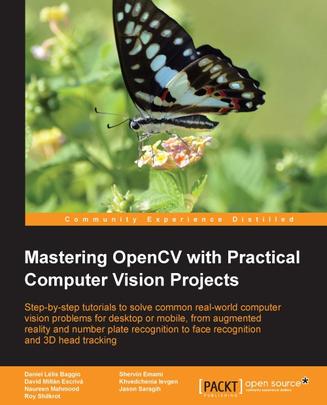
Mastering OpenCV with Practical Computer Vision Projects
Computer Vision is fast becoming an important technology and is used in Mars robots, national security systems, automated factories, driver-less cars, and medical image analysis to new forms of human-computer interaction. OpenCV is the most common library for computer vision, providing hundreds of complex and fast algorithms. But it has a steep learning curve and limited in-depth tutorials. Mastering OpenCV with Practical Computer Vision Projects is the perfect book for developers with just basic OpenCV skills who want to try practical computer vision projects, as well as the seasoned OpenCV experts who want to add more Computer Vision topics to their skill set or gain more experience with OpenCV’s new C++ interface before migrating from the C API to the C++ API. Each chapter is a separate project including the necessary background knowledge, so try them all one-by-one or jump straight to the projects you’re most interested in. Create working prototypes from this book including real-time mobile apps, Augmented Reality, 3D shape from video, or track faces & eyes, fluid wall using Kinect, number plate recognition and so on. Mastering OpenCV with Practical Computer Vision Projects gives you rapid training in nine computer vision areas with useful projects. - Allows anyone with basic OpenCV experience to rapidly obtain skills in many computer vision topics, for research or commercial use - Each chapter is a separate project covering a computer vision problem, written by a professional with proven experience on that topic - All projects include a step-by-step tutorial and full source-code, using the C++ interface of OpenCV -

计算机视觉
《计算机视觉:一种现代方法(第2版)(英文版)》内容简介:计算机视觉是研究如何使人工系统从图像或多维数据中"感知"的科学。《计算机视觉:一种现代方法(第2版)(英文版)》是计算机视觉领域的经典教材,内容涉及几何摄像模型、光照和着色、色彩、线性滤波、局部图像特征、纹理、立体相对、运动结构、聚类分割、组合与模型拟合、追踪、配准、平滑表面与骨架、距离数据、图像分类、对象检测与识别、基于图像的建模与渲染、人形研究、图像搜索与检索、优化技术等内容。与前一版相比,《计算机视觉:一种现代方法(第2版)(英文版)》简化了部分主题,增加了应用示例,重写了关于现代特性的内容,详述了现代图像编辑技术与对象识别技术。 -
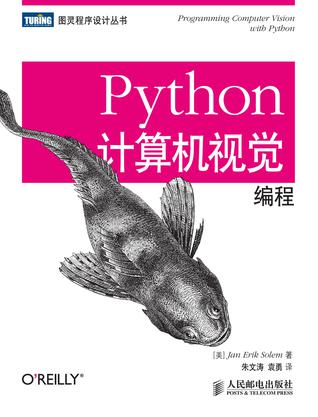
Python计算机视觉编程
《python计算机视觉编程》是计算机视觉编程的权威实践指南,依赖python语言讲解了基础理论与算法,并通过大量示例细致分析了对象识别、基于内容的图像搜索、光学字符识别、光流法、跟踪、三维重建、立体成像、增强现实、姿态估计、全景创建、图像分割、降噪、图像分组等技术。另外,书中附带的练习还能让读者巩固并学会应用编程知识。 《python计算机视觉编程》适合的读者是:有一定编程与数学基础,想要了解计算机视觉的基本理论与算法的学生,以及计算机科学、信号处理、物理学、应用数学和统计学、神经生理学、认知科学等领域的研究人员和从业者。 -
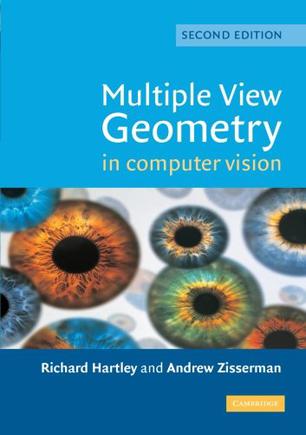
Multiple View Geometry in Computer Vision
A basic problem in computer vision is to understand the structure of a real world scene given several images of it. Techniques for solving this problem are taken from projective geometry and photogrammetry. Here, the authors cover the geometric principles and their algebraic representation in terms of camera projection matrices, the fundamental matrix and the trifocal tensor. The theory and methods of computation of these entities are discussed with real examples, as is their use in the reconstruction of scenes from multiple images. The new edition features an extended introduction covering the key ideas in the book (which itself has been updated with additional examples and appendices) and significant new results which have appeared since the first edition. Comprehensive background material is provided, so readers familiar with linear algebra and basic numerical methods can understand the projective geometry and estimation algorithms presented, and implement the algorithms directly from the book. -
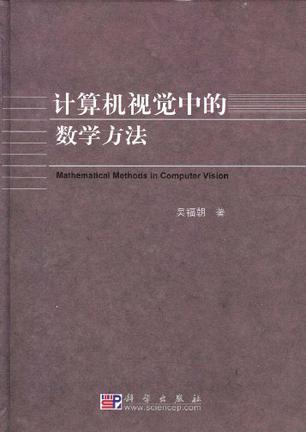
计算机视觉中的数学方法
《计算机视觉中的数学方法》由射影几何、矩阵与张量、模型估计3篇组成,它们是三维计算机视觉所涉及的基本数学理论与方法。射影几何学是三维计算机视觉的数学基础,《计算机视觉中的数学方法》着重介绍射影几何学及其在视觉中的应用,主要内容包括:平面与空间射影几何,摄像机几何,两视点几何,自标定技术和三维重构理论。矩阵与张量是描述和解决三维计算机视觉问题的必要数学工具,《计算机视觉中的数学方法》着重介绍与视觉有关的矩阵和张量理论及其应用,主要内容包括:矩阵分解,矩阵分析,张量代数,运动与结构,多视点张量。模型估计是三维计算机视觉的基本问题,通常涉及变换或某种数学量的估计,《计算机视觉中的数学方法》着重介绍与视觉估计有关的数学理论与方法,主要内容包括:迭代优化理论,参数估计理论,视觉估计的代数方法、几何方法、鲁棒方法和贝叶斯方法。 -
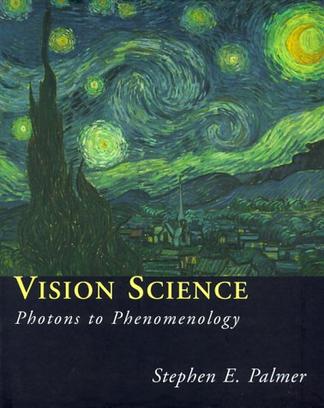
Vision Science
This book revolutionizes how vision can be taught to undergraduate and graduate students in cognitive science, psychology, and optometry. It is the first comprehensive textbook on vision to reflect the integrated computational approach of modern research scientists. This new interdisciplinary approach, called "vision science," integrates psychological, computational, and neuroscientific perspectives.The book covers all major topics related to vision, from early neural processing of image structure in the retina to high-level visual attention, memory, imagery, and awareness. The presentation throughout is theoretically sophisticated yet requires minimal knowledge of mathematics. There is also an extensive glossary, as well as appendices on psychophysical methods, connectionist modeling, and color technology. The book will serve not only as a comprehensive textbook on vision, but also as a valuable reference for researchers in cognitive science, psychology, neuroscience, computer science, optometry, and philosophy.